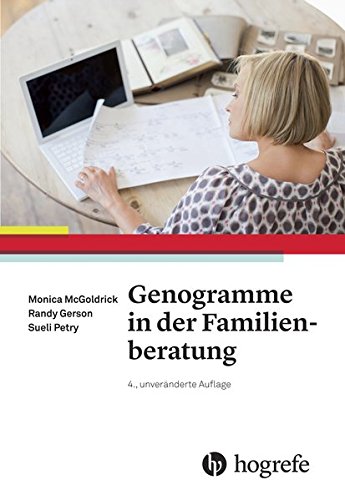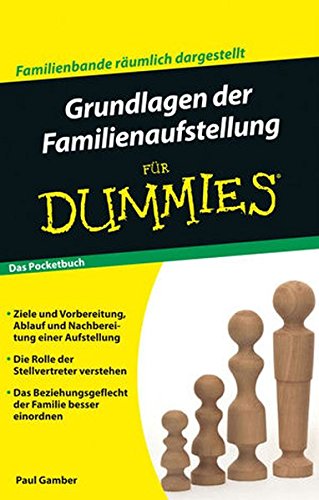Landsiedel NLP Training →
Coaching →
genogram
Genogram
Definition of Genogram
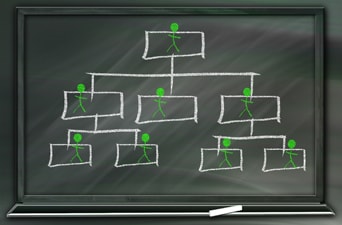
A genogram is the graphical representation of relationships and structures within a family. Typically, a genogram records all family members of multiple generations (originating family and current family).
Often, a genogram is used as a basis or complement for a family constellation or systemic therapy, as well as in couples and family coaching. It serves to understand relationship patterns and connections within a family, as well as to illustrate recurring patterns in family history.
Table of Contents
- Definition of Genogram
- What are Genograms used for?
- Origin and History of Genograms
- Who should be included in a Genogram template?
- Guide to Creating a Genogram – an Overview
- Detailed Guide to Creating a Genogram
- Further Reading
What are Genograms used for?
A genogram provides a comprehensive overview of one's own family, family tree, and their structure. From a meta-perspective, relationship patterns can be recognized. Frequently, familial patterns that recur over several generations can be traced back. Through a genogram, one's own life history and experiences can be placed in a larger context. Thus, certain behaviors, decisions, crises, taboos, destinies, or illnesses can be better understood and classified within the familial background. Visualization using a genogram can help gather, organize, and make connections transparent from family history.
Origin and History of the Genogram
The genogram evolved from the work of some important figures in family therapy. The first family trees (genograms) were created by the American psychiatrist and psychotherapist Murray Bowen. Bowen (1913-1990) is considered one of the founders of systemic therapy. His goal was to gain an overview of the generations and existing family patterns through genograms. Ivan Boszorményi-Nagy (1920-2007), a Hungarian-born physician and psychiatrist, was a co-founder of one of the first research centers for family therapy in Philadelphia, USA, which later became the largest training center for family therapy in the USA. He assumed, among other things, that invisible bonds exist within the family structure and manifest as "emotional debts." These debts are registered across family generations and must be repaid repeatedly. Symptoms occurring in a family member indicate an outstanding debt repayment. Therefore, family origin should always be considered in therapy.
He introduced the multi-generational perspective as an important innovation, which is now an essential part of constellation work. Family therapist Virginia Satir (1916 – 1988) also advanced the development. Building on Bowen's and Boszorményi-Nagy's work, Satir developed the "family sculpture" to visualize familial relationships, where family members position themselves like statues interacting with each other. Finally, family therapists Monica McGoldrick and Randy Gerson built on Bowen's idea (cross-generational family patterns) and systematically developed the genogram as we know it today. Although the idea existed for a long time, the genogram only gained entrance into family therapy in the early 1990s.
Who should be included in a genogram template?
In the recording, all members of one's own family tree are included. The family of the life partner or spouse plays no role in this, as it is not one's own family of origin. Unless there is a person who has significant importance in one's own life, they can also be noted. If a genogram is created for one's own children, of course, the partner's family, if they are the other parent, will also be considered and outlined. All family members are noted, including those who died early, are missing, or are excluded members. This includes one's own siblings, parents, their siblings, grandparents and their siblings, as well as step-parents or individuals who belonged to the family in some form. Miscarriages or stillbirths within the family circle are also noted.
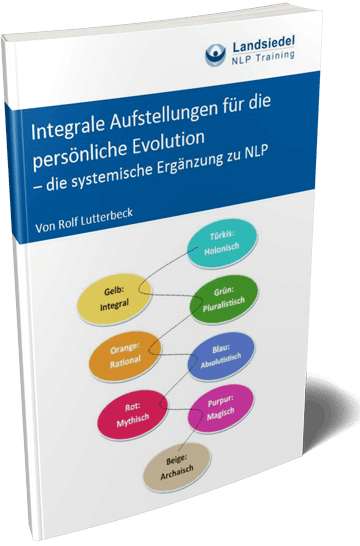
Integral Constellations for Personal Evolution
Guide to Creating a Genogram – an Overview
- Step: Gather Information What do you know about the family? Who is included? What were significant events? Collect and record as much detailed information as possible about multiple generations of the family.
- Step: Create Genogram Structure Using predefined symbols, create a kind of family tree. All family members and their relationships are depicted in a sketch. Start with the person for whom the genogram is created, then depict the parent generation, and finally the grandparents and, if applicable, the great-grandparents.
- Add Special Events After the basic structure is created, add further information (occupation, separations, deaths, hardships, successes, etc.) as far as known.
- Evaluation Now you can systematically evaluate: Where are there parallels between family members? Are there similar careers, relationship patterns, separations, recurring difficulties? Is there an identifiable connection to current problems or crises?
Detailed Guide to Creating a Genogram
Creating a genogram template requires some preparation. The specific approach depends on whether you want to sketch a genogram for your own family or if it is being created for a client as part of a coaching process. In the former case, you can start by researching relatives and gathering information. In the genogram work with coaching clients, the interview guide outlined in point 1.2 is recommended.
1. Preparation, Information Gathering, and Research
1.1 Creating a Genogram of Your Own Family

If you want to create a genogram of your own family, it's best to proceed step by step and gradually approach the family history. Gather as much information as possible about your family. Note down everything you know about your siblings, parents, grandparents, uncles, and aunts. Ask family members, especially older ones, about the family history. Be sensitive in your approach. Browsing through photo albums together can be a good starting point. Some relatives will eagerly share stories, while others may be hesitant about sensitive topics coming to light. Approach the research and conversations with appreciation and without prejudice. Your own siblings can also be a rich source of memories that you may have forgotten.
Information is particularly helpful about
- Birth and death dates
- Places of birth and residence
- Occupations
- Significant life events and illnesses
- Experiences during wartime
- Business failures or major financial losses
- Unusual or early deaths
- Special awards and achievements
- Family traditions or a family motto
- Taboos and family secrets (as far as they are shared)
This preparation is also possible for clients in family counseling or coaching if they are given sufficient time for it. From a practical standpoint, the research will probably take place during the coaching process, and initially, the client may only be able to provide the information they already know.
1.2 Creating a Genogram for a Client
When creating a genogram, a structured questionnaire can be helpful to capture as much information as possible. In addition, other family members can be interviewed to get a comprehensive picture and fill in any gaps in knowledge. The following questions are a suggestion. It is advisable to first gather information about the client and their family, and then ask about the data of previous generations (parents, grandparents).
Information about the client themselves
- What is your marital status? Married? Divorced? Is this your first or second marriage?
- Do you have children? How many? Girls or boys? What are their names?
- With which partner did you have these children (if multiple partners are involved)?
- Do you live in a blended family?
- Are there foster or adopted children?
- Do you have siblings? How many? Do you have half-siblings? What are their names?
- What is your position in the sibling order?
- Were there miscarriages/abortions/stillbirths within your family? With your siblings or your own children?
- If you're not sure, do you suspect it? (This question can also be omitted, but sometimes there are suspicions or unclear feelings, so a note can be made at this point).
- When were the individual members born? If someone has passed away, when did it happen?
- Are there separations/divorces? When did they occur?
Information about the client's family of origin
- What is your mother's name? What is your father's name?
- Are your parents (still) married?
- Were there other significant partnerships for a parent (or both), e.g., previous marriages, engagements, etc.?
- Did/do your parents have siblings? How many? Half-siblings? Brothers or sisters? What are their names?
- What position did your mother/your father have in the sibling order?
- Were there miscarriages/abortions/stillbirths? (Suspicions can also be noted).
- Are there step-parents?
- Are your parents/their siblings still alive?
- When were the individual members born? If someone has passed away, when did it happen?
- Are there separations/divorces? When did they occur?
Information about the parents' families of origin
Start with one parent and their family, then the other family. This way, you'll keep track.
- What are/were the mother's parents' names?
- Were they married? Birthdays/death days? Siblings? Miscarriages, etc.? Step-parents? Obtain information as above (client's family of origin)
- What are/were the father's parents' names?
- Were they married? Birthdays/death days? Siblings? Miscarriages, etc.? Step-parents? Obtain information as above (client's family of origin)
Corresponding questions can also be asked for the grandparents' generation, as far as they can still be answered.
Further Questions about the Family
Additional information is now requested to complement the recorded biographical data, provided they have not already been revealed through free conversation.
- What do/did you/your parents/grandparents do for a living?
- Are there other important individuals, e.g., because they lived with the family?
- Was there emigration, flight, or expulsion within the family? Any special circumstances during wartime? Missing persons, deaths, prisoner of war, concentration camps?
- Was there alcohol or drug abuse, illnesses, or severe emotional problems?
- Were there severe disabilities?
- Were children given away? To foster parents? To institutions?
- Were there conflicts with the law? Prison stays?
- Were there major financial losses? Business failures?
- Are there individuals within the family who are particularly close or who have/had a major conflict with each other?
- Are there ostracized family members or people who have severed contact or gone missing?
- What are the special strengths / resources within your family? Special achievements? Awards? Family cohesion?
You don't have to work through the questions like a catalog. Often, the client will share more when they can speak freely. The questions are a guide to note down everything important, but they can also be answered in a free conversation.
2. Graphic Representation - Proven Genogram Template and Symbols
After (or even during) the information gathering process, the individual family members and their relationships are visualized. It is advisable to start with the current generation, starting from oneself and existing siblings. These are all arranged in a horizontal line. One level above, the parents are visualized, above them the grandparents, and another level higher, if applicable, the great-grandparents. Certain symbols have been established for the graphic representation. This genogram template is based on the commonly used symbols by McGoldrick and Gerson, occasionally with some modifications.
Example of a Simple Genogram
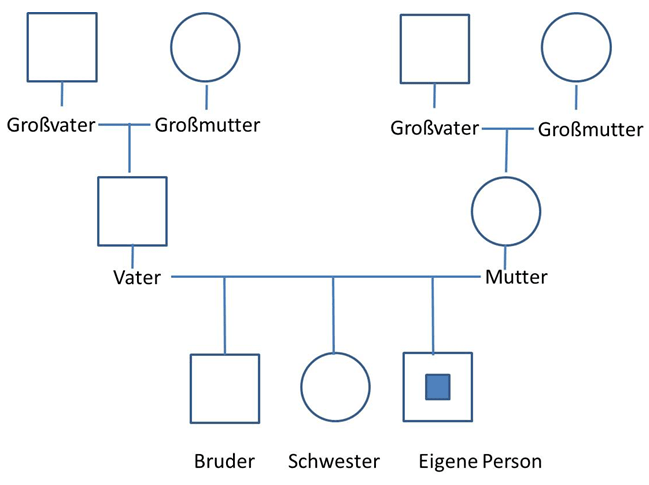
Regarding the Individual Symbols and their Arrangement
- Male individuals are depicted with a square, females with a circle. The self is additionally marked with a dot in the middle.
- When arranging parental couples, men are depicted on the left, women on the right. Siblings are arranged in order of birth, with the eldest on the far left and the youngest on the right.
- Connections between married couples and parent-child relationships are represented by lines.
- Solid lines symbolize marriage / dashed lines represent a common-law relationship.
Additional Symbols
- A cross or "X" means "deceased" (both spellings are common in the literature, it's sensible to choose one version and use it consistently).
- A triangle means "gender unknown" (e.g., for stillbirths or family members about whom little information could be obtained).
- Twins, adoptive, and foster children are indicated by their own symbols.
- Specific symbols are also used for abortions, miscarriages, or stillbirths.
- The connecting lines can be marked with additional symbols, e.g., divorce, conflict, broken relationships, etc.
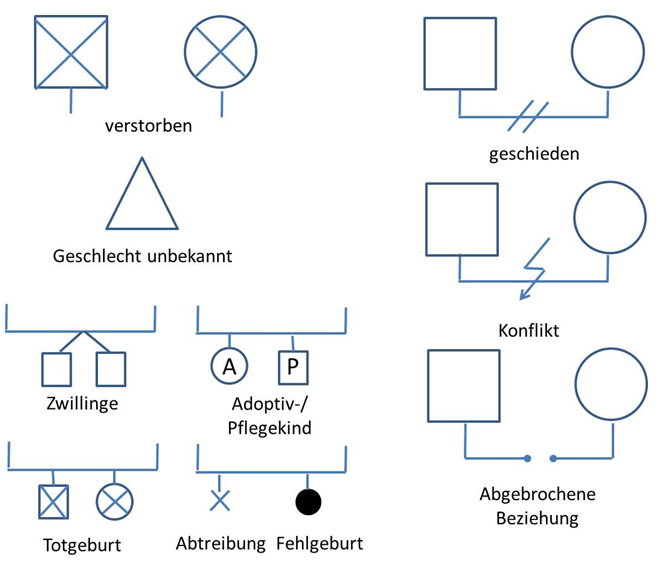
(For a comprehensive overview of genogram symbolism, refer to Monica McGoldrick and Randy Gerson's "Genograms in Family Counseling," see reference below.)
3. Personal Data and Special Events
Once all the data is recorded, such as names, marriages, birth and death dates, children, etc., special events are added. What else is known about the family members?
- Occupation, nationality
- Noticeable personality traits (violent, caring, introverted, etc.)
- Special talents and abilities (artist, musical, linguistic talent, comedian, etc.)
- Special circumstances (illnesses, alcoholism, frequent travel, prison stay, famous singer, successful entrepreneur, etc.)
- Anything else known about individual members (womanizer, unfaithful, chronically broke, etc.)
The data can initially be noted on post-its. There is likely a lot to add about some members, while others may seem to have fewer characteristics. This can also be an interesting hint if someone seems to have been hardly noticed.
The relationships among family members can also be visualized with additional symbols (see connection lines). In this case, specific symbols can be used if they are very meaningful.
4. Evaluation, Discovering Connections, Gaining Insights
Now it's time for the evaluation and thus the actual genogram work. This is probably the most interesting part for some. Many insights and "aha" moments probably occurred during the creation of the genogram (Example: "All first-born women in the family remained unmarried or entered a convent."). This already allows for some initial conclusions to be drawn.
With the complete genogram, you now have a good overview.
It quickly becomes apparent where there were frequent tragedies, where life plans were similar, or the same relationship patterns occurred. Where is there a recognizable connection to current difficulties or life crises?
When evaluating the genogram, a solution-oriented approach should be taken. That means no hasty interpretations should be made. Instead, it is more sensible to approach the evaluation with specific questions.
- What might current symptoms / illnesses / crises have to do with my family?
- Where are there resources in the family system, supportive relationships, helpful talents that can be utilized?
- What makes me particularly pensive? Sad? Angry?
- What patterns are visible here?
- What solutions are available within my family history? How were crises overcome, how were tragedies dealt with?
- Etc.
The questions mentioned are just a suggestion and can be expanded as desired. The genogram provides an inexhaustible basis for delving deeper into one's own family history. The insights can now be approached professionally. For example, in a systemic coaching process, or systemic therapy. The genogram can also serve as the basis for a family constellation, as a lot of information is already known.
Tips for Practical Implementation
Creating a genogram can take several days or weeks. Here are a few practical tips:
- First, roughly jot down all the information. Once you have the essentials, you can transfer them neatly.
- Use a large sheet (roll of kraft paper, flip chart paper, possibly several glued together)
- Choose landscape orientation.
- Start with the client, who is entered at the bottom center.
- If you can't estimate how much space is needed, start by placing individual members with small post-its.
- There is software available for creating a genogram, many of them free. However, hardly anyone has the opportunity to print a chart in a sufficiently informative flip chart size at home. Nevertheless, the programs can be a good starting point.
Further Reading
Genograms in Family Counseling
Family Constellations Basics for Dummies Pocketbook
Family Secrets: Why It's Worth Tracking Them Down
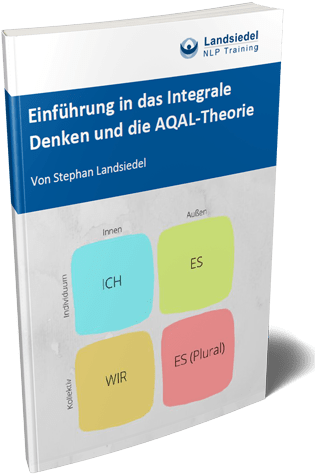
Introduction to Integral Thinking and AQAL Theory
E-Book for 0,- €
Introduction to Integral Thinking and AQAL Theory
Discover the world of Integral Thinking and the AQAL Theory!
- Learn more about Ken Wilber and Integral Theory.
- Understand the AQAL model and the significance of the different colors of the levels.
- Explore the application areas of Integral Theory.
- Exclusive only in this E-Book!


